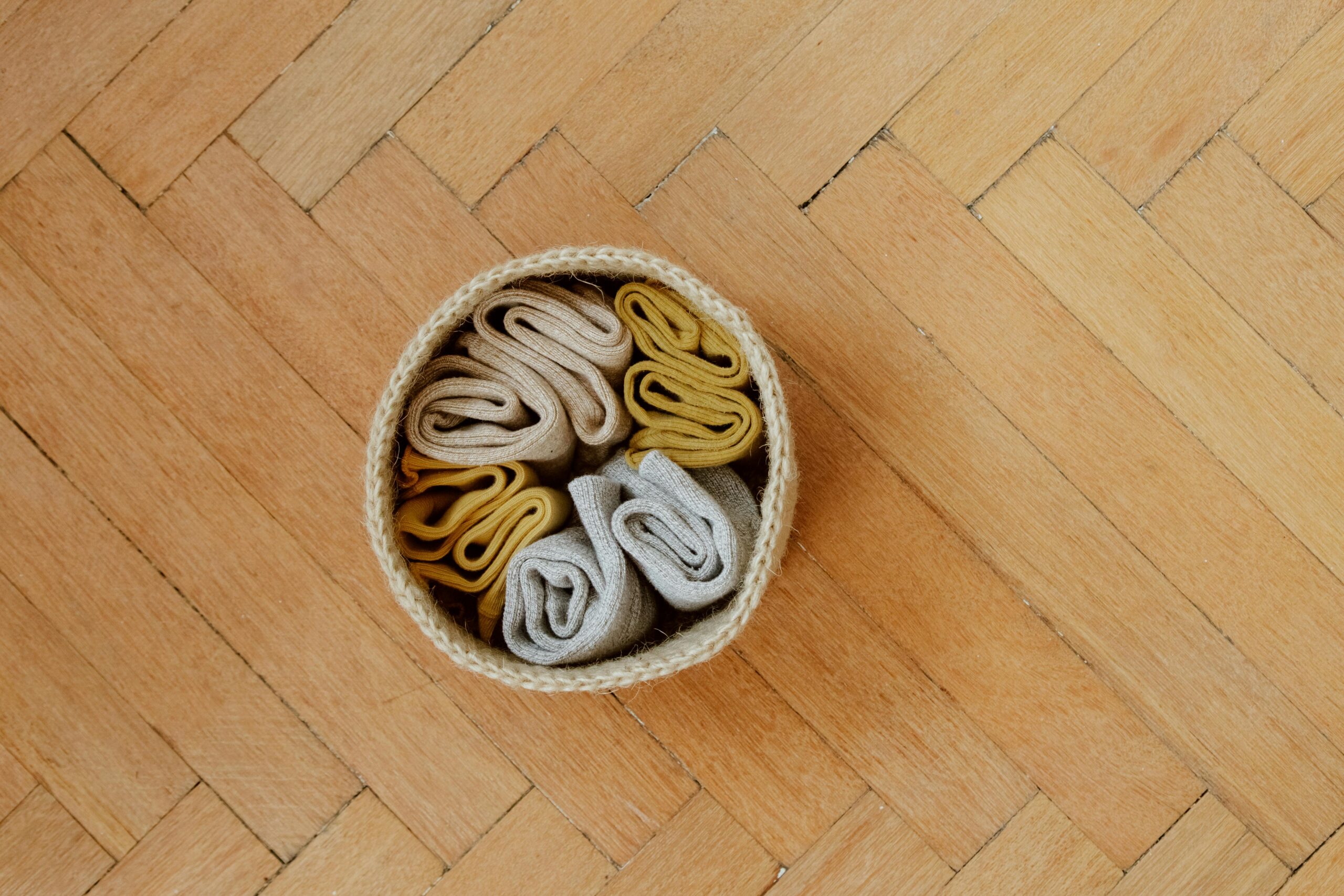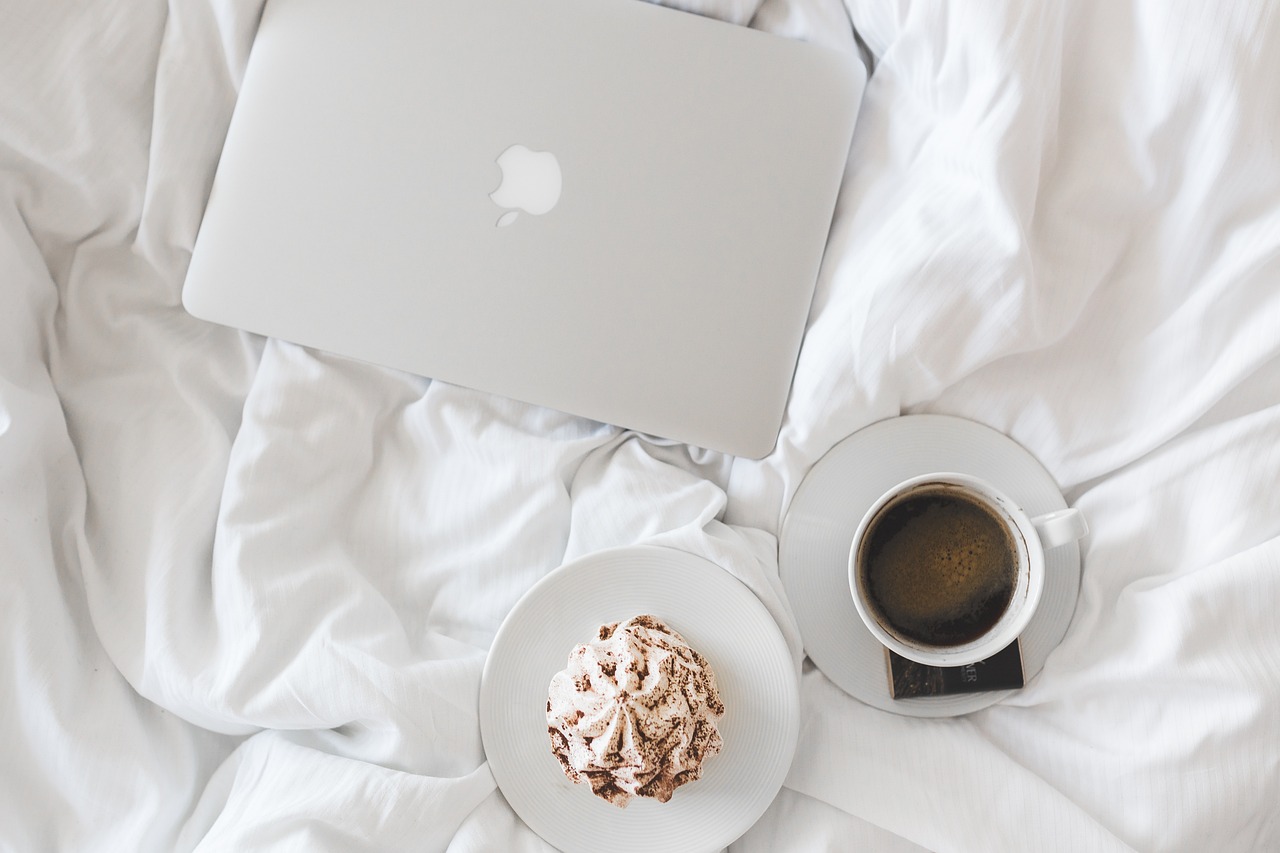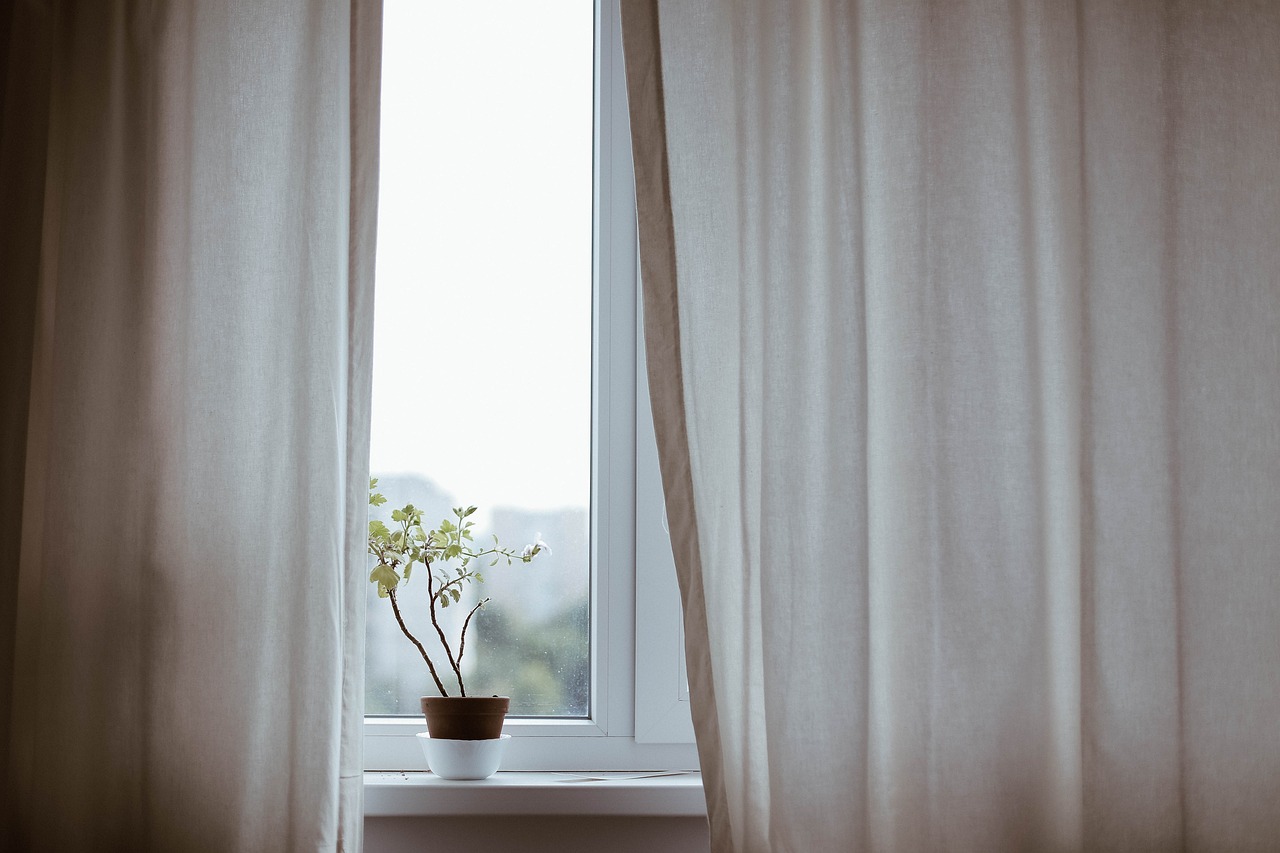It starts with something as simple as a misplaced set of keys or a stack of unread mail on the counter. You walk in the door after a long day, only to be greeted by clutter that seems to mirror the messiness of your thoughts. Before you know it, the physical chaos of your home has spiraled into mental overwhelm. Sound familiar?
The truth is, that the state of your surroundings has a profound impact on your mental health. Research has shown that clutter not only causes stress but can also increase feelings of anxiety and even depression. When our physical space is disorganized, our minds tend to follow suit, creating a cycle of chaos that feels impossible to escape. But what if I told you that by organizing your home, you could also bring clarity to your mind?
This 30-day plan is designed to do just that. It’s not just about decluttering your house; it’s about creating a peaceful environment that fosters mental calm and balance. Over the next month, you’ll be guided through a structured process to clear your space, establish systems for efficiency, and introduce mindfulness practices that will help you stay centered and focused. The goal? By the end of this journey, you’ll have a tidier home and a clearer, calmer mind.
So, let’s dive into this plan—one that brings peace, clarity, and even a little joy as you move from chaos to calm.
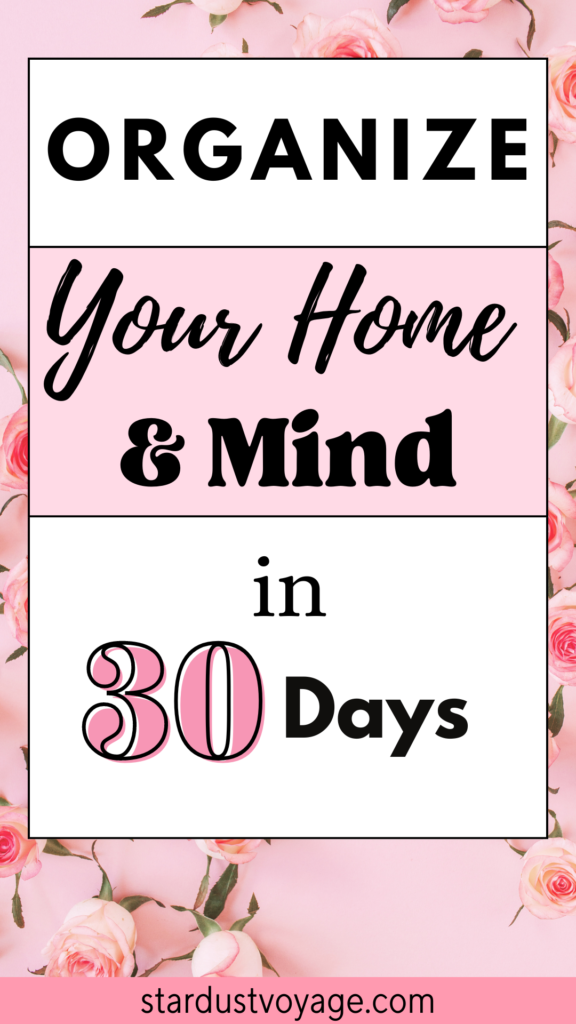
Week 1: Declutter Your Space for Mental Clarity
Goal: To free up physical and mental space by eliminating clutter, laying the foundation for a peaceful environment and a calm mind.
Day 1: Set Your Intentions & Create a Vision
Before diving headfirst into decluttering, take some time to reflect on why you’re doing this. What does a clutter-free home mean to you? Maybe it’s about reducing stress, or perhaps it’s about creating a space that supports your personal growth. Write down your vision for how you want your home to feel, and use this as a guide throughout the process. This small step helps shift the mindset from “cleaning up” to creating a sanctuary.
Day 2: Declutter the Entryway
The entryway is the first space you see when you come home and sets the tone for your entire house. If it’s filled with shoes, bags, and random clutter, it can feel chaotic. Today, clear it out. Add a shoe rack, hooks for keys and coats, and maybe a small basket for mail. Keep only what’s necessary. This simple transformation can make every return home feel like you’re stepping into a peaceful retreat.
Day 3: Declutter Kitchen Counters
The kitchen is often a hub of activity, but too many gadgets, appliances, and stray items can make it overwhelming. Clear your counters, leaving only the essentials like your coffee maker or a bowl of fresh fruit. Not only will this make your kitchen look more spacious, but it will also create a calm environment that makes cooking or meal prep feel less stressful. A clean kitchen is the heart of an organized home.
Day 4: Organize the Pantry and Fridge
A cluttered pantry or fridge can lead to food waste and meal-time anxiety. Today, tackle both spaces. Throw out expired items, group similar foods together, and invest in clear containers to store pantry staples. Label everything for easy access. A well-organized kitchen will save you time and mental energy, giving you more headspace for other tasks.
Day 5: Declutter the Living Room
The living room is where you go to relax, but it’s hard to unwind when it’s filled with magazines, remotes, and random knick-knacks. Clear the surfaces of unnecessary items, and create dedicated spaces for essentials like remotes or books. A simple basket for throw blankets or a small tray for candles can bring warmth and order to the room. Now, when you sit down to watch a movie or read, your mind will be at ease, too.
Day 6: Tidy the Bedroom
Your bedroom should be your sanctuary, a place for relaxation. Clear nightstands, tidy dressers, and keep only items that bring you peace. Soft lighting, calming colors, and minimal decor help create an environment that encourages restful sleep. Removing visual clutter from this space can have an immediate effect on how well you rest at night.
Day 7: Declutter the Closet
Closet clutter can make getting dressed in the morning a stressful event. Today, sort your clothes into “keep,” “donate,” and “discard” piles. Use bins for accessories and seasonal items, and organize clothing by type or color. A streamlined closet reduces decision fatigue and makes getting ready a breeze. Plus, donating unused clothes can bring a sense of accomplishment and goodwill.
Organized people are just too lazy to go looking for what they want.
– Albert Einstein
Week 2: Organize for Efficiency
Goal: Once your space is decluttered, set up organizational systems that make it easier to maintain order. These steps are designed to save time and mental energy in your daily life.
Day 8: Create a Functional Command Center
Every household needs a spot where important items like keys, mail, and schedules live. Set up a command center near the entrance of your home. Use hooks for keys, a bulletin board or calendar for reminders, and a small basket for mail. This will prevent those frantic searches for missing items and give you a sense of control over daily chaos.
Day 9: Organize Kitchen Drawers
Kitchen drawers can easily become catch-alls for random items. Today, sort through your utensils, gadgets, and tools. Use drawer dividers to keep everything in its place. This step isn’t just about neatness—it’s about making cooking a more enjoyable and efficient experience. No more digging through cluttered drawers in search of that elusive spatula!
Day 10: Organize Bathroom Cabinets
Your bathroom should be a space of cleanliness and calm, but too often, cabinets become overrun with half-used products. Today, sort through your toiletries and discard what you no longer use. Store daily essentials in clear containers, and keep backup items organized in a designated area. A tidy bathroom makes your morning and evening routines more pleasant.
Day 11: Paper Management System
Paper clutter can be overwhelming, especially when it comes to important documents. Set up a filing system with labeled folders for bills, medical records, and other important paperwork. Create a “to-do” folder for items that need action, and review it regularly. This system will keep your paper clutter in check and prevent important tasks from slipping through the cracks.
Day 12: Digital Decluttering (Part 1)
In today’s digital world, it’s not just physical clutter that can overwhelm us. Start by cleaning up your email inbox. Delete old or irrelevant messages, and create folders to categorize the ones you need to keep. Unsubscribe from newsletters you no longer read. A clean inbox can have the same calming effect as a tidy room.
Day 13: Digital Decluttering (Part 2)
Next, tackle your desktop and digital files. Organize your files into folders, and back up important documents to the cloud or an external drive. Delete old files that are no longer relevant. Keeping your digital life organized will save you time and reduce stress in the long run.
Day 14: Organize Your Finances
Money management can be a major source of stress, so today, focus on organizing your finances. Review your budget, set up automatic bill payments, and organize financial documents. You’ll feel more in control of your financial future and free up mental space for other pursuits.
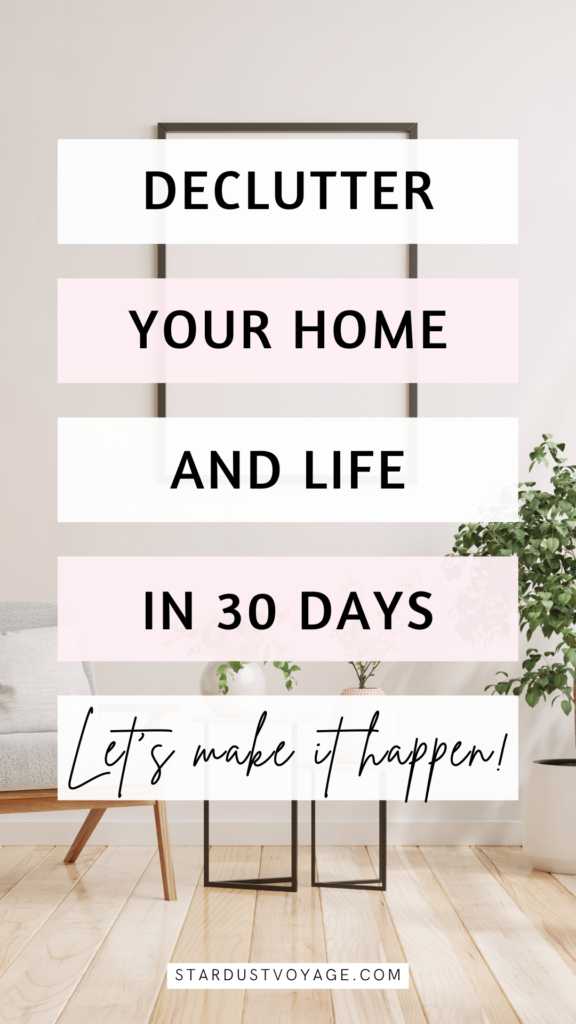
Week 3: Mindfulness and Mental Organization
Goal: Now that your home is more organized, focus on clearing mental clutter. Introduce mindfulness practices and routines to promote mental calm and clarity.
Day 15: Start a Journaling Practice
Writing down your thoughts is a powerful way to declutter your mind. Spend 10 minutes each morning or night journaling. You can write about what’s on your mind, set daily intentions, or simply reflect on your day. Journaling is a great way to process emotions and bring mental clarity.
Day 16: Practice Mindful Breathing
Take a few moments during your day to focus on your breath. Deep, slow breaths help calm the nervous system and reduce stress. You can practice mindful breathing while sitting at your desk, waiting in line, or even during a stressful moment. It’s a simple yet effective tool to help you stay grounded.
Day 17: Set Boundaries for Social Media
Constant social media scrolling can clutter your mind with unnecessary information and stress. Today, set boundaries for your social media use. Limit yourself to specific times of the day, and avoid using it before bed. Instead, focus on being present in your physical environment. You’ll feel more connected to the world around you and less anxious.
Day 18: Create a Daily Gratitude Practice
Gratitude is a powerful tool for shifting your mindset from stress to peace. Each day, write down five things you’re grateful for. This practice helps train your mind to focus on the positive aspects of your life, reducing feelings of overwhelm.
Day 19: Introduce a Morning Meditation Routine
Starting your day with meditation can help you approach challenges with calm and clarity. Spend 5–10 minutes each morning in meditation, focusing on your breath or a specific intention. Over time, you’ll notice a greater sense of peace and focus throughout your day.
Day 20: Stretch or Practice Yoga
Physical movement is an important part of mental health. Today, introduce a daily stretching or yoga routine to release tension in your body and calm your mind. You don’t need a long
practice—10 minutes can make a big difference in how you feel.
Day 21: Detox from Negative Thoughts
Just like physical clutter, negative thoughts can take up unnecessary space in your mind. Practice recognizing and replacing negative self-talk with positive affirmations. Over time, you’ll notice a shift in your overall mindset and mood.
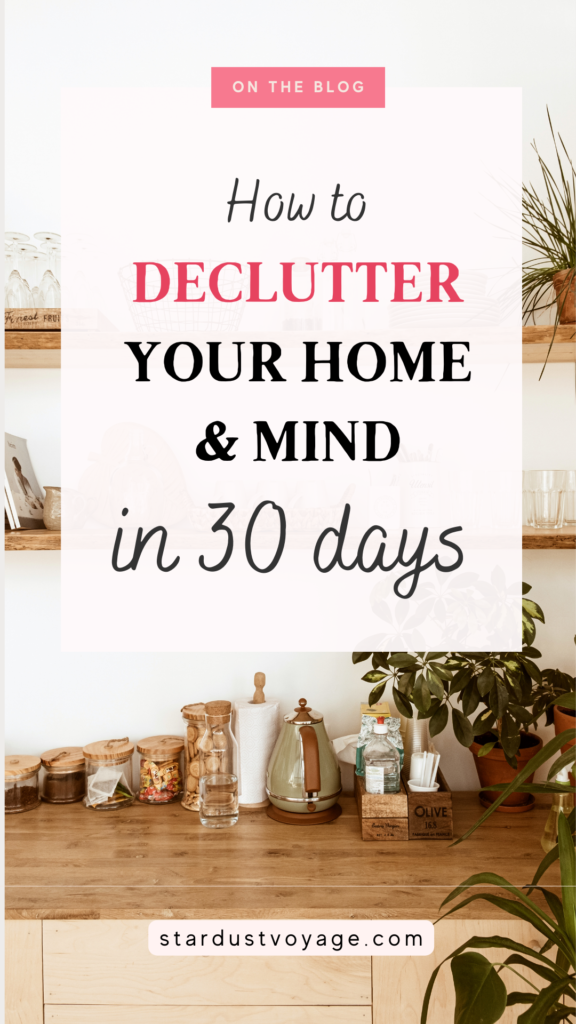
Week 4: Harmonize Your Space and Mind
Goal: Combine the efforts of the past three weeks to create lasting harmony between your home and mind. Implement systems to maintain order, and integrate self-care practices to sustain mental peace.
Day 22: Organize Your Sleep Space
A restful night’s sleep is crucial for mental clarity. Today, focus on optimizing your bedroom for sleep. Remove distractions, use soft lighting, and invest in comfortable bedding. A well-organized sleep space promotes better rest, leaving you feeling refreshed and ready to tackle the day.
Day 23: Create a Relaxation Corner
Everyone needs a space to unwind. Designate a small area in your home for relaxation—whether it’s a comfy chair in the living room or a cozy corner in your bedroom. Fill it with things that bring you peace, like books, candles, or soothing music. Having a designated space to recharge can make a big difference in how you feel.
Day 24: Declutter and Curate Your Wardrobe
By now, your closet should be organized, but today is about curating your wardrobe. Take stock of what makes you feel good, and let go of items that no longer serve you. Dressing in clothes that make you feel confident and comfortable sets a positive tone for the day.
Day 25: Introduce Meal Planning
A clutter-free kitchen is great, but meal planning takes it a step further. Plan your meals for the week, and prep what you can in advance. This simple system saves time, reduces stress, and helps you maintain a balanced diet.
Day 26: Organize Your Workspace
Whether you work from home or simply need a space to pay bills or handle household tasks, an organized workspace is essential. Clear the clutter, and use organizational tools like trays, drawers, or filing cabinets. A clean, tidy workspace boosts productivity and keeps you focused.
Day 27: Declutter Your Mind with a Brain Dump
Feeling overwhelmed by too many tasks? Today, do a “brain dump.” Write down everything on your mind—tasks, worries, ideas—onto a sheet of paper. This helps clear mental clutter and prioritize what truly needs your attention.
Day 28: Create a Vision Board for Your Life Goals
A vision board is a powerful tool for visualizing your future. Gather images, quotes, and words that represent your goals and dreams, and create a vision board to display in your home. This practice helps you stay focused on what truly matters and motivates you to keep moving forward.
Day 29: Implement a Daily Routine for Balance
Establish a daily routine that supports your physical and mental well-being. This could include morning meditation, meal prep, or setting aside time for relaxation. A consistent routine keeps your home and mind in order, reducing chaos and stress.
Day 30: Reflect and Plan for the Future
Congratulations! You’ve completed the 30-day plan and transformed both your home and your mindset. Take some time today to reflect on how far you’ve come. What worked well? What could be improved? Use this reflection to plan for the future and ensure that the calm and clarity you’ve created continue to grow.
Conclusion: Your New Normal
By following this 30-day plan, you’ve done more than just declutter your home—you’ve decluttered your mind. You’ve created systems that promote order, foster mental peace, and empower you to live with intention.
The transformation isn’t just about a cleaner house; it’s about the newfound mental clarity that comes with it. When your space is organized, your thoughts become clearer, your stress levels drop, and you find yourself with more energy to focus on what truly matters.
In this journey, remember that it’s not about perfection. There will always be moments when life gets messy. The key is to maintain the habits and practices you’ve developed to keep chaos at bay. With your home and mind in harmony, you can confidently navigate the ups and downs of life, knowing you have the tools to return to calm whenever you need.
So here’s to a home that brings you peace, and a mind that stays clear—no matter what life throws your way. Welcome to your new normal.


